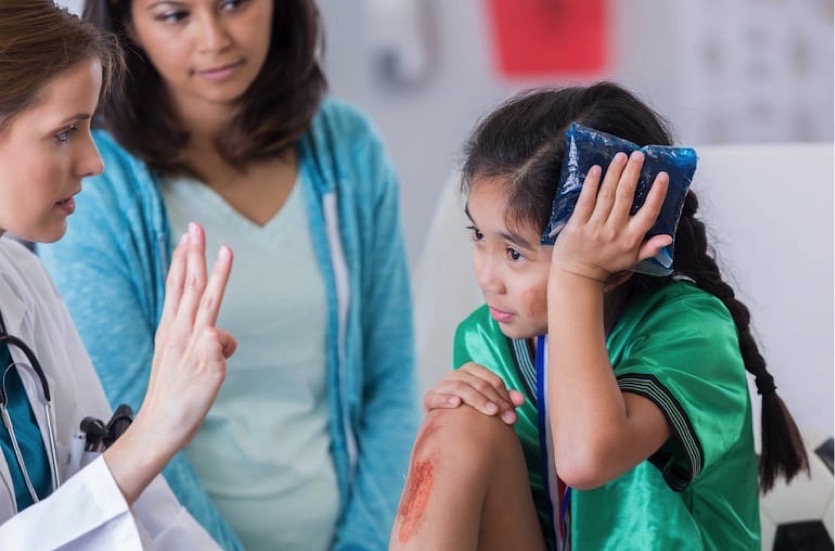

Wondering if that high fever warrants a visit to the ER? The experts at CHI give the lowdown...
When your precious little bub is in pain, it’s tough not to panic. Whether it’s because of a high fever or a deep cut, our first instinct (especially as first-time parents) is to reach for our phone and call our trusty family doctor or rush our kid to the emergency room (ER). That’s why it’s important to know the difference between a true emergency or an illness or injury that could easily be treated at home or by a GP. Lucky for us, the good folks over at CHI have put together a handy guide to help us make that all-important decision:
A GP or family doctor is trained to handle a wide range of common outpatient symptoms. In fact, most GPs are adept at dealing with a few minor emergencies as well, such as small cuts requiring a few stitches or tissue glue application. If your kid is alert and active, is still able retain food or fluids, and his or her ailment does not fall within the lists of warning signs/emergency conditions below, he can most likely see a GP. Some of these minor conditions include:
CHI’s well-baby clinic has paediatric doctors and nurses with a midwifery background to support you and your baby in your journey of parenthood.

Look out for these signs and take your child to the ER early if there is:
If a rare life-threatening situation does occur, you’ll need the help of trained paramedics to ensure that the emergency is taken care of on the way to the hospital. Call 995 immediately if your child has:
Go straight to the ER if your infant is less than 3 months old – at this age, a fever may be the only sign of a serious infection. Otherwise, most children will still appear well even with a high fever. Do not focus on what the thermometer says but rather on your child’s appearance and how he or she is acting. How high your child’s temperature is does not correspond to the severity of the underlying illness. Try giving fever medication such as paracetamol or ibuprofen, encourage them to drink plenty of fluids and dress them in light clothing. See your family doctor if the fever lasts longer than three days or if there are accompanying symptoms such as sore throat, earache, vomiting, diarrhoea or painful urination.
Bumps and bruises on the head are extremely frequent in children under four years old and are one of the most common reasons for ER visits. Most are minor with no long-lasting effects. However, go to the ER if there is loss of consciousness (regardless of duration), amnesia, severe headache, persistent vomiting, balance problems, blurred vision, worsening dizziness, a seizure, drowsiness or confusion. Also check for bruising under the eyes or ears, fluid or blood from the ears or nose. Otherwise, once your child stops crying, you can place an ice pack wrapped in a cloth over your child’s bump and monitor your child closely over the next 48-72 hours for any new symptoms.
Instead of panicking, we should take a deep breath, relax and focus on managing the situation. Although it’s easier said than done, it’s definitely faster (and less expensive) than rushing to the ER for every little emergency. But listen to your instincts; bring bub to see your family doctor for peace of mind. And don’t worry – with time, you’ll be a pro at dealing with your child’s health problems. You’ve got this!
Need more health advice for bub? Check out our website for more information.
350 Orchard Road
#08-00 Shaw House
Singapore 238868
+65 6776 2288
enquiries@chi-health.com.sg